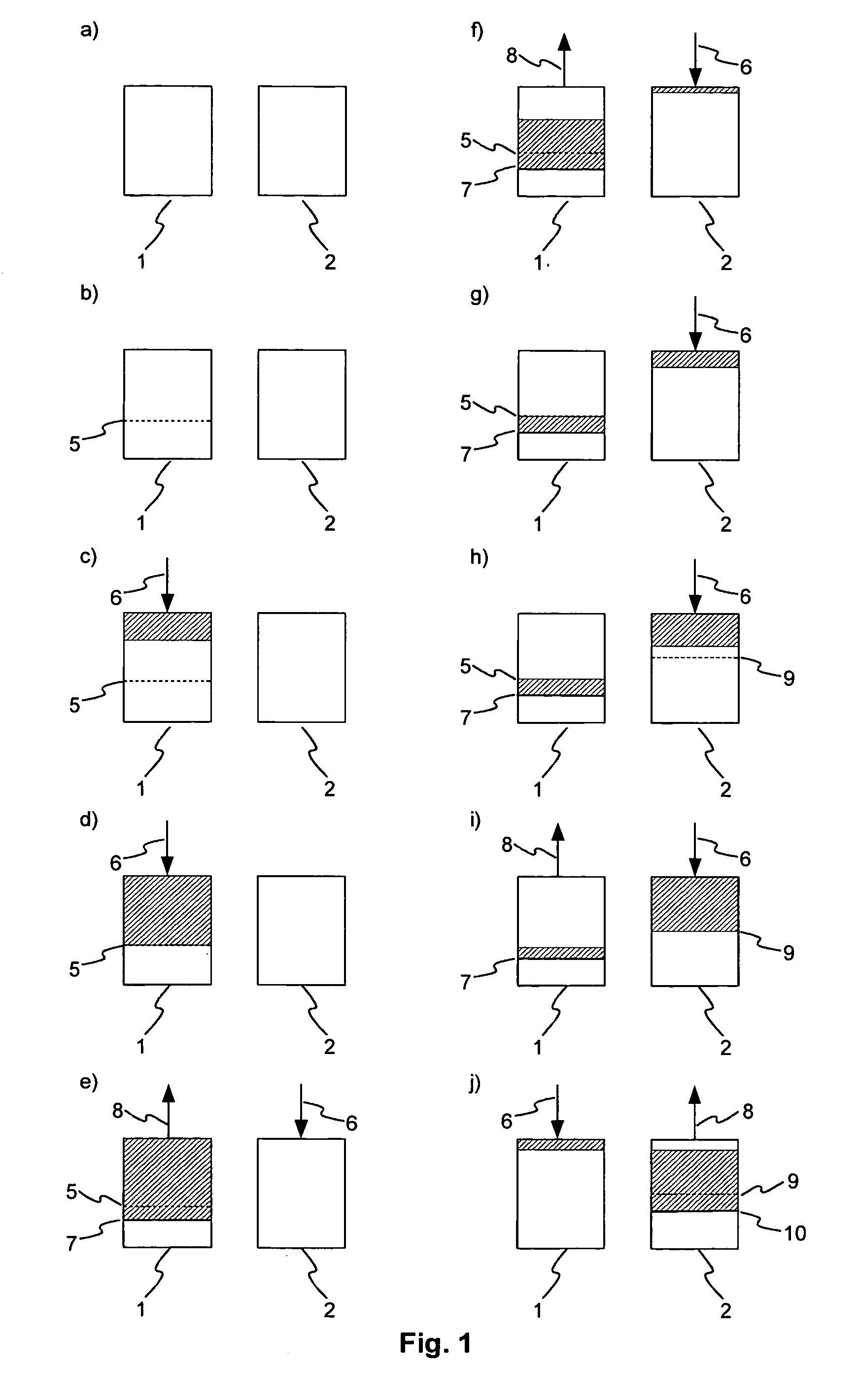Method for multibank memory scheduling
a memory scheduling and multi-bank technology, applied in the direction of memory adressing/allocation/relocation, digital storage, instruments, etc., can solve the problem that all of the above solutions have in common that they are very costly
- Summary
- Abstract
- Description
- Claims
- Application Information
AI Technical Summary
Benefits of technology
Problems solved by technology
Method used
Image
Examples
Embodiment Construction
[0042] In FIG. 1 access to two banks 1,2 of an SDRAM using a method according to the invention is shown. For simplicity the access is divided into a sequence of states of the banks, which are depicted in parts a) to j) of FIG. 1. For better clarity in the figure only a single complete output block is written into one bank 1,2. Of course a plurality of output blocks can subsequently be written into the banks. When the access is initiated both banks 1,2 are empty, which corresponds to FIG. 1a). As shown in part b), in the left bank 1 a pointer 5 is set to mark the size of an output block. The input stream 6 coming from the drive are now stored in the left bank 1, which is depicted in part c). As soon as the pointer 5 is reached, the buffer can be read. Until a read access occurs, the writing to the left bank 1 continues. This is shown in part d). In this way the first bank 1 is filled with a plurality of output blocks. After the first read access to the left bank 1 the input stream 6 ...
PUM
 Login to View More
Login to View More Abstract
Description
Claims
Application Information
 Login to View More
Login to View More - R&D
- Intellectual Property
- Life Sciences
- Materials
- Tech Scout
- Unparalleled Data Quality
- Higher Quality Content
- 60% Fewer Hallucinations
Browse by: Latest US Patents, China's latest patents, Technical Efficacy Thesaurus, Application Domain, Technology Topic, Popular Technical Reports.
© 2025 PatSnap. All rights reserved.Legal|Privacy policy|Modern Slavery Act Transparency Statement|Sitemap|About US| Contact US: help@patsnap.com



